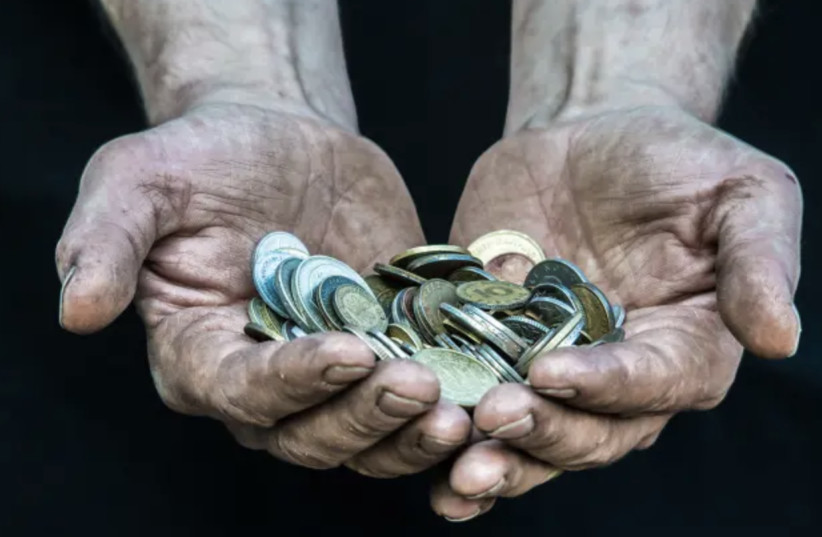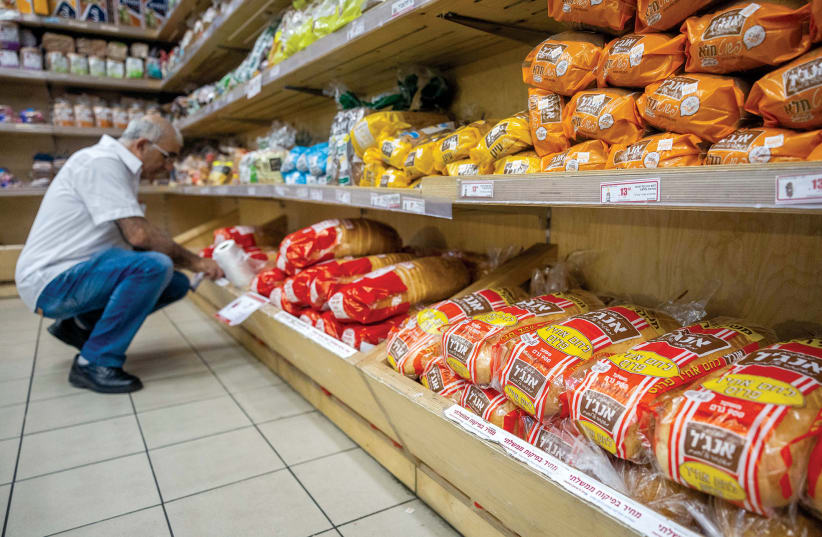More than 1 in 4 households in Israel (26%) were unable to cover all monthly expenses in 2021, with 10.6% of households forgoing medical treatment and 6.9% going without buying prescription drugs, according to the official 2021 State of Israel poverty report issued by the National Insurance Institute (NII) on Wednesday.
The report revealed that 20% of the Israeli population (about 1.95 million people) were considered poor in 2021, falling below the 2021 poverty line (which sat at about 2,849 NIS for individuals, 5,698 NIS for couples and between 9,117 NIS and 12,108 NIS for couples with 2 to 4 children).
As such, in 2021 Israel was ranked as having the second-highest poverty rate in the developed world, second only to Costa Rica.
“The State of Israel has for years been in a significant gap among the OECD countries in poverty and inequality,” noted Yarona Shalom, director general of the NII. “To deal with the disparities in society, an increase in allowances is required on the one hand and on the other hand providing tools and assistance to families and individuals who are in the labor market but whose salary is low, with an emphasis on the periphery.”
Shalom went on to highlight the need for legislative changes that would ease the eligibility conditions for government stipends and allow the acquisition of education and specialization, which would “inevitably lead to an increase in wages and contribute to getting out of poverty.”


A lot of Israelis feel poor
The report also showed that the feeling of subjective poverty has increased in most of the population groups from the past years. According to early results of a survey conducted by the NII, nearly a third of all women and men (30.6% and 27.4%, respectively) feel that they are poor. As well, 32.6% of people between the ages of 35 and 67 and 25.7% of young people up to 35 reported subjective poverty.
In response to the report’s findings, Minister in the Welfare and Social Affairs Ministry Yoav Ben Tzur acknowledged his discontent with the amount of poverty in Israel and promised that his ministry is moving to help those in need.
“We refuse to accept a reality where senior citizens, children and families live in poverty. This is a terrible thing that a reformed and moral society cannot accept,” he said.
“Diverse and adapted employment options for populations that need assistance are a necessary thing that will be promoted in the coming term in order to get out of the cycle of poverty, and we are currently working on a new plan for the benefit of all Israeli citizens.”
Minister Yoav Ben Tzur
A rebound from the pandemic
Despite the year’s bleak statistics, when placed in perspective next to 2020, 2021 did have some positive indications. Namely, it saw a return to growth for the Israeli economy in the wake of the COVID-19 pandemic: while in 2020 the GDP was reduced by 1.9%, in 2021 it increased by 8.3% - a high growth rate even compared to other developed countries. As well, the unemployment rate decreased significantly and an increase in real wages was recorded.
Part of this growth is likely due to competent government financial support granted during the pandemic period. “The aid given to the population of Israel during the COVID crisis emphasized the great importance of social security systems adapted to the needs of the public,” the report stated.
The NII concluded its findings with a recommendation to increase in the allowances granted to “low-income families or families that have fallen into temporary economic hardship,” as well as income assurance, old-age pensions and unemployment benefits and “the promotion of tools and assistance for families who are in the labor market and still living in poverty.”

